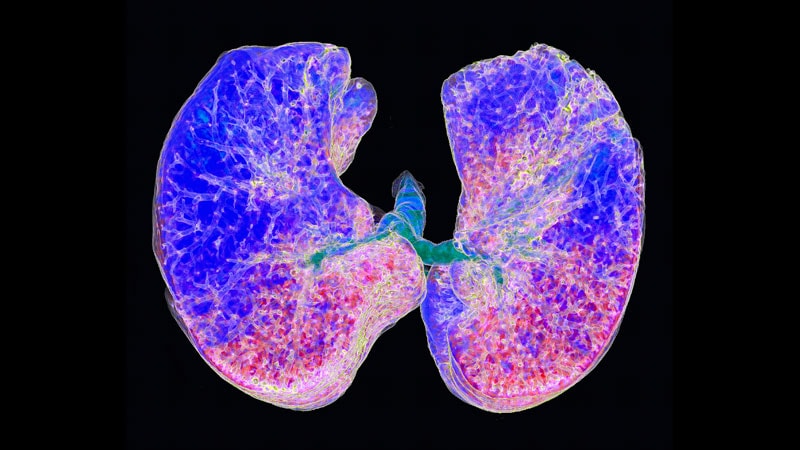CT scans are used to diagnose, track, and screen for a variety of diseases. Even before the National Lung Screening Trial research team proved that an annual CT scan could reduce lung cancer mortality, physicians were ordering 62 million scans per year. At the same time, advances in technology have improved power and resolution. The CT scan has changed the way that healthcare is practiced, and that change has created challenges and opportunities. We’re now experiencing a modern pandemic of incidental findings. It falls to the clinician to decide when the dreaded “incidentaloma” is clinically relevant.
Pulmonologists are adept at managing pulmonary nodules found on scans performed for other reasons. Multiple risk-stratification models exist and guidelines provide algorithms that are easy to follow. Radiologists generally reference these guidelines in their reports and instruct the clinician on how to proceed. A less common but still prevalent incidental finding in the pulmonary parenchyma is an interstitial lung abnormality (ILA).
What is an ILA and how is it defined? Well, it’s tricky. A position paper from the Fleischner Society outlines specific radiographic findings that are consistent with an ILA: honeycombing, traction bronchiectasis, parenchymal distortions, and reticular abnormalities that take up more than 5% of a particular lung zone. To be called an ILA, the patient in whom these abnormalities are present must not yet be diagnosed with a clinical interstitial lung disease (ILD). In one sense, then, an ILA can be considered a subclinical ILD. Detecting fibrosing ILDs before they progress is of vital importance because lung function lost cannot be restored. ILAs detected on CT scan are associated with increased morbidity and mortality, and 50% will progress radiographically over a period of 5 years. Case closed then, right? ILAs represent subclinical ILD and they should be treated as such. Let’s throw antifibrotics at them and preserve lung function!
Not so fast. ILAs are identified in 2%-10% of adults and 7%-9% of patients with higher smoking rates and cardiovascular risk factors. They’re observed in up to 10% of CTs done for lung cancer screening. Their prevalence is far greater than that of all ILDs combined, so most will not progress to clinically important ILD. Furthermore, the elevated mortality rates may not be directly attributable to the ILAs, and some of the excess morbidity is of questionable clinical significance. The million-dollar question: How do we identify which ILAs are important?
A new paper published online in the CHEST journal tackled this difficult question. The authors designed an iterative survey which they provided to pulmonologists and thoracic radiologists with expertise in ILD. The survey assessed the experts’ views on how to diagnose and manage ILAs. They included a total of 44 experts, and greater than 75% agreement on a particular response constituted a consensus. Consensus was reached on proper annotation on reports and referral to pulmonologists for lung testing.
The short version: ILAs should be annotated on radiology reports and in most cases should trigger referral to a pulmonologist. In underresourced areas with few specialists, there are probably scenarios where high-resolution CT or lung function testing could be recommended without referral. In my opinion, though, you’re going to need a good pulmonologist to sort these out and avoid unnecessary testing, treatment, and anxiety. Recognition of ILAs is an important step forward in identifying ILD early; let’s just be careful not to diagnose disease when it doesn’t exist.
Aaron B. Holley, MD, is an associate professor of medicine at Uniformed Services University and program director of pulmonary and critical care medicine at Walter Reed National Military Medical Center. He covers a wide range of topics in pulmonary, critical care, and sleep medicine.
Follow Medscape on Facebook, Twitter, Instagram, and YouTube

